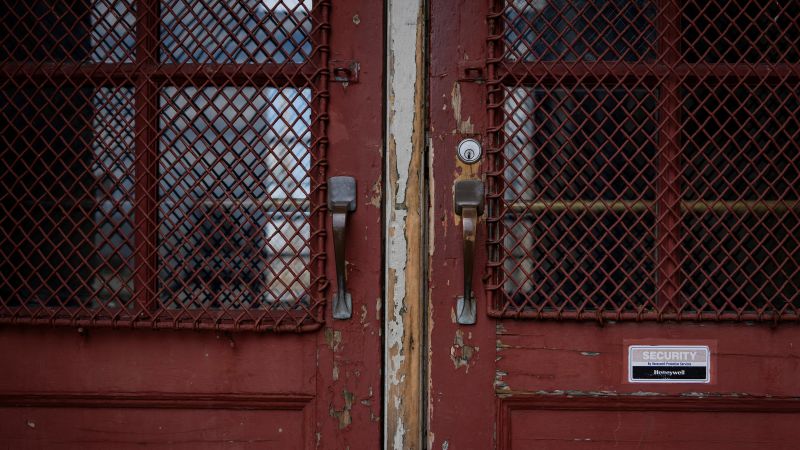The lead contamination crisis in Milwaukee has raised significant concerns for parents, community organizations, and public health advocates. A scene captured recently outside the cafeteria of North Division High School reflected the urgency and frustration surrounding the issue as parents and activists gathered, holding signs that read, “Milwaukee–Beer, Cheese, and Lead Poisoning” and “Test All Schools for Lead Now.” Following reports of lead poisoning associated with peeling paint in local elementary schools, the Milwaukee school district initiated emergency protocols, including closing certain buildings and relocating students. This response was too little, too late for many community members, particularly given the longstanding problem of lead exposure in the city.
Critical voices, including Melody McCurtis, deputy director of Metcalfe Park Community Bridges, have highlighted that Milwaukee’s lead problems are neither new nor effectively addressed by the district’s abrupt actions. According to McCurtis, lead has contaminated homes, schools, and drinking water in Milwaukee for years, emphasizing the pervasive nature of the established crisis. This current crisis was punctuated earlier this year when a child was confirmed poisoned by lead originating from a school environment, igniting public scrutiny over accountability and effective remediation measures. The residents’ skepticism stems from a historical lack of sufficient response from local authorities, leading to eroded trust in any new commitments made.
As the district and the health department strive to navigate this crisis, they face a significant obstacle: federal assistance has dwindled. The Trump administration’s decision to cut support from the Centers for Disease Control and Prevention (CDC) removed critical resources that could have bolstered efforts to tackle the lead problem directly. Although there have been efforts to clean and repaint schools, many residents, including members of the Get the Lead Out Coalition, believe these actions do not provide a substantial solution. Rather, they feel that covering lead hazards is insufficient and merely a temporary “Band-Aid” on a deeper systemic issue.
Historically, Milwaukee has been burdened by lead contamination due to its municipally constructed water pipes made from lead and its use in paints and gasoline. Despite bans on these harmful materials, lead continues to leach from aging infrastructures, posing serious health risks, particularly for children who are especially susceptible to its neurotoxic effects. Annually, around 1,000 children in Milwaukee are diagnosed with lead poisoning, dramatically impacting their cognitive function, behavior, and overall health.
Reports show that moisture-damaged homes, peeling lead paint, and older infrastructures create environments where children can be exposed to lead poisoning. It is worth noting that many of Milwaukee’s educational facilities had long neglected regular maintenance, leading to conditions that foster lead hazards. In an alarming discovery, it was confirmed that lead poisoning had also occurred in schools – a departure from the previously accepted notion that homes were the primary source of exposure. The educational experience for students has become increasingly precarious as schools face closures and relocations with little warning, leaving parents scrambling for information amidst uncertainty.
Dr. Brenda Cassellius, Milwaukee Public Schools Superintendent, provided insights into the funding challenges facing the district, expressing that difficult trade-offs must be made between hiring educational staff and maintaining school environments. Moving forward, the district has resolved to take responsibility for facilities repairs to lift that burden from individual schools. Yet, the estimated costs are alarming, with potential expenses reaching upwards of $20 million to remediate inadequately maintained infrastructures.
A poignant personal narrative follows the problem, narrated through Tracy Hampton, whose family has experienced the direct impacts of lead exposure. Hampton’s son Prince encountered severe health issues due to elevated lead levels from their living environment. The story serves to highlight not just a statistic, but the real families grappling with the consequences of a systemic failure to address lead hazards. Hampton’s family exemplifies the lingering effects of lead exposure causing educational difficulties and health implications which reflect a widespread community concern about the lasting impacts of governmental neglect concerning public health.
The city continues to seek innovative solutions. Recently, health officials have stepped up their outreach efforts, encouraging parents to get their children tested for lead, while aiming to rehabilitate affected homes and schools, albeit limited by available funding and resources. Totoraitis, the city’s health commissioner, has stressed that true safety involves sustained maintenance and proper investigative actions to discover hidden lead risks within the community. As Milwaukee grapples with this pervasive crisis, the need for a comprehensive, proactive approach remains more crucial than ever, emphasizing a collective responsibility to protect future generations.
By focusing on improving infrastructure and community education, Milwaukee may help prevent further lead exposure and ensure all children have the opportunity to thrive in a safe, healthy environment. The community’s engagement, combined with proper governmental action, serves as a compelling narrative for societal change rooted in accountability and progressive health policies.



